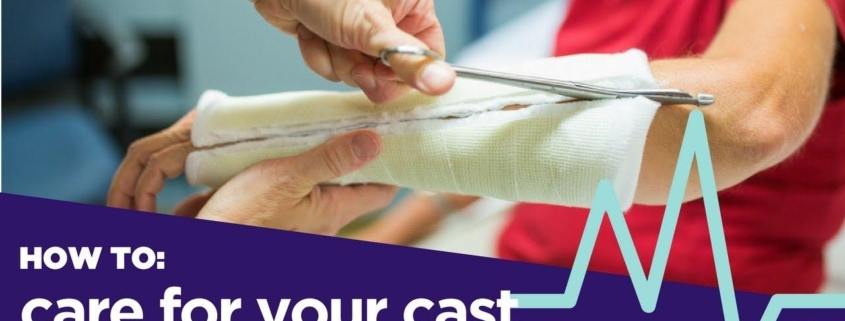
Cast Care
Overview
When a broken bone or sprain is severe, your doctor may recommend a cast to protect and heal the injured area. Casts are medical devices, custom fitted to the patient, made of plaster or fiberglass. The rigid structure of a cast provides protection and immobilization, allowing the injured area to heal properly. They are commonly used in treating injuries to the arm, wrist, leg, or foot.
Types
There are two main types of casts: plaster casts and fiberglass casts.
- Plaster Casts: These are the traditional type of casts. They are heavier than fiberglass casts and can be less durable but are more suitable for certain types of fractures because they mold better to the body.
- Fiberglass Casts: These casts are lighter and more durable than plaster ones. The material is also more breathable, reducing the likelihood of skin irritation.
Causes
Casts are most often used when a break, fracture, or severe sprain occurs. Accidents such as falling from a height, vehicle collisions, or sports injuries are common events that might lead to a bone injury requiring a cast. In some cases, casts are also used in the preoperative or postoperative management of certain types of orthopedic surgeries.
Symptoms
When in a cast, it’s normal to feel varying levels of discomfort, including:
- Itchiness
- A feeling of pressure or tightness
- Minor pain or throbbing
If you notice any of the following, contact your healthcare provider immediately:
- Intense pain
- Numbness, tingling, or inability to move fingers or toes
- A foul smell or drainage from the cast
Diagnosis
Generally, if a cast is necessary, your doctor will determine this after a physical examination and imaging tests (like X-Rays or MRI) to diagnose your specific type of injury. Your doctor will then decide the type of cast and length of wear that’s best for your recovery.
Treatment Options
Maintaining proper cast care is essential. Here are some general guidelines:
- Keep your cast dry. If it gets wet, it might lose its shape and effectiveness.
- Don’t scratch the skin under the cast with any objects due to the risk of skin infection.
- Do not attempt to remove the cast yourself; it should only be removed by a healthcare professional.
Living With Cast Care
Caring for your cast correctly can ease your recovery. Follow these tips:
- Elevate the cast regularly to reduce swelling.
- Develop a daily routine to inspect your cast and skin around it. Report any issues to your healthcare provider.
- Avoid activities that could damage the cast or risk further injury.
When to Seek Help
Seek immediate medical attention if you experience:
- Severe, continuous pain or swelling in the cast area.
- Signs of infection, such as fever, redness, swelling, or foul smell.
- The cast becoming soggy, soft, cracked, or loose.
Taking care of your cast is a crucial part of your recovery journey. Following these guidelines can help ensure a smooth and swift healing process.
